A local’s guide to Galway City: 10 top tips

Festivals – all the time
Galwegians love to celebrate, and seem to go from one festival to another. As joint capital of culture it has a huge programme of events – along with existing festivals. Cúirt is an Old Irish word for a court of poetry, and the name of a week-long festival of literature (20-25 April) that Seamus Heaney, Edna O’Brien and Allen Ginsberg have appeared at in the past. Galway Arts Festival in July (13-26) feels to me like it involves everyone in the city. Baboró is an inspiring festival for children and there’s also the Galway Races (not just about the horses) and the celebration of a local delicacy at our Oyster Festival (25-27 September).
Two walks from Wolfe Tone Bridge
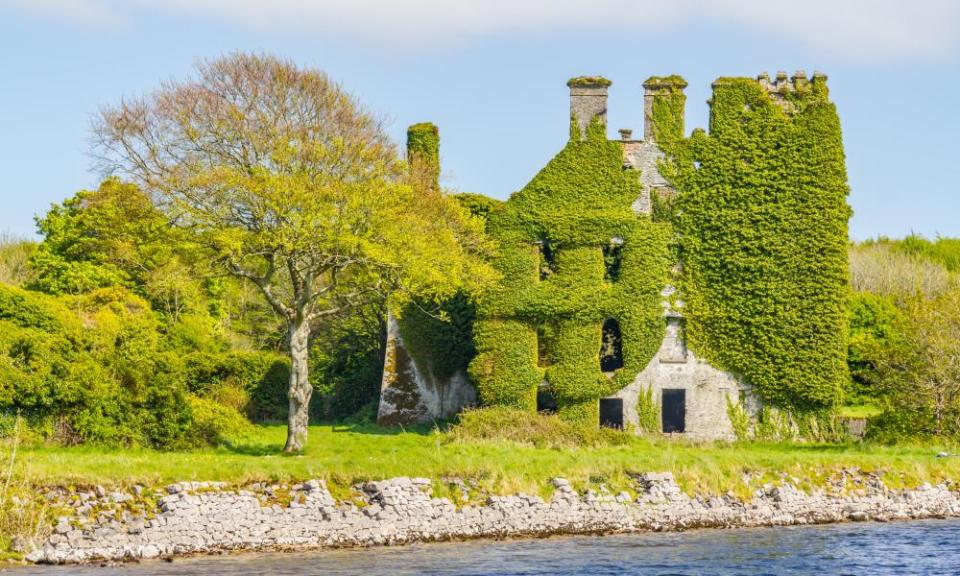
There are two very different walks starting from Wolfe Tone Bridge. First, wander south past the Claddagh district and out along Nimmo’s Pier and by the seashore, until you see the Promenade on the right, built in the mid-19th century but gradually extended since. Here, you’ll meet walkers, joggers, strollers, crawlers and more – all taking in the sea air and ever-changing colour and light that is Galway Bay. It’s about three miles long and one of the glories of Galway. The second walk follows the canal north to University College, heads into the grounds through the entrance and, at Bailey Allen Hall, turns right to the river. Follow the riverbank for a couple of miles to Dangan, opposite the ruins of Menlo Castle. This gives you a different sense of Galway’s character but for me, having grown up by the sea, the Prom is the one.
Wonderful pubs

Whiskey drinkers go to Garavan’s in William Street or Sonny Molloy’s in High Street as both have a remarkable array of labels to sample. Freeney’s, also in High Street, the Hyde Bar in Forster Street and Tigh Nora in Cross Street all carry great gins (and tonic). In pubs, the emphasis is on traditional music and the Crane Bar on Sea Road is the one for purists. A great way to experience the atmosphere on the streets is to sit outside Tigh Neachtain, another classic pub, with a drink and watch the world go by. I’ve experience of all of these establishments but I’m mature and grey and like good pub talk, so particularly recommend the Bunch of Grapes in High Street and Lonergans in Salthill (no websites). There’s now a small distillery, Micil, making poitín in the Oslo Bar in Salthill: it does tours and tastings Tues-Sat at 2pm, 4pm and 6pm.
Joyful theatre fires the imagination
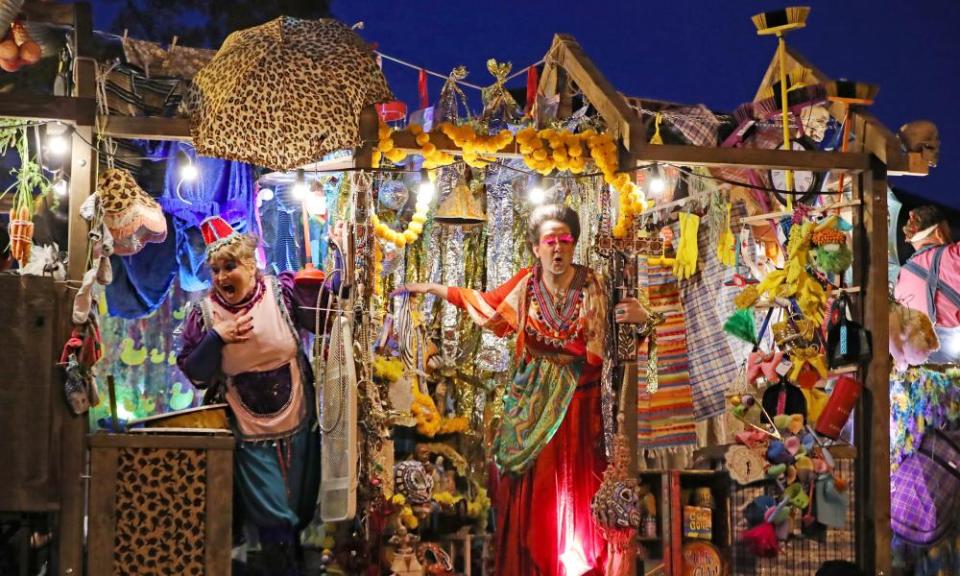
Macnas is an Old Irish word that means “the energy of a young calf leaping around the meadow in the springtime”. It’s also the name of a Galway theatre group that specialises in outdoor spectacle. A macnas parade is a riot of imagination, colour, enthusiasm, music, throbbing drums, fire, dance and mayhem. An air of abandon infects most of the population during these events; it’s as if a spell spreads over Galway and makes everybody happy for the day. Its 2020 programme is built around the epic of Gilgamesh.
• Events 10-12 April, 21 June, 19-28 November, 12 December, macnas.com
Seafood and sea views
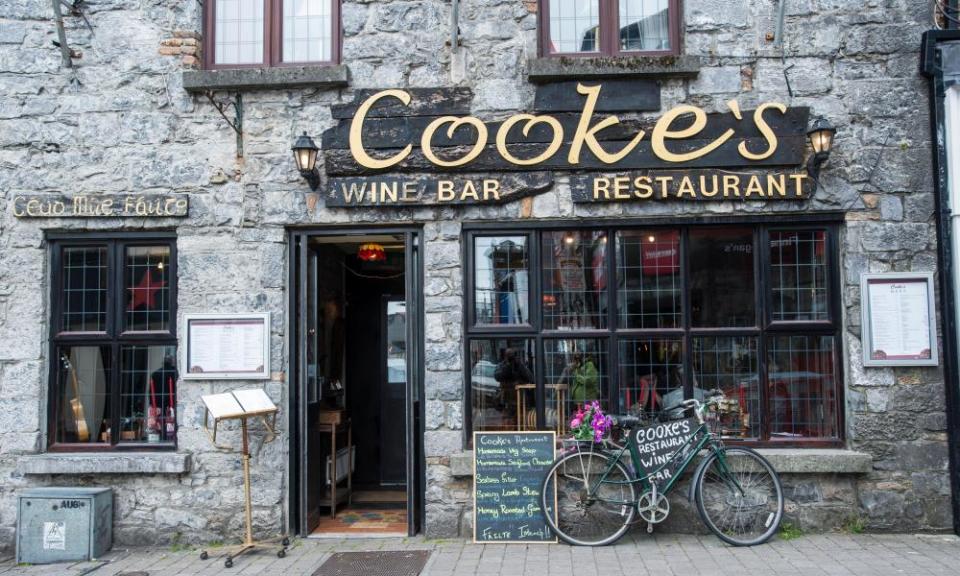
A taste of Galway has to start with the oysters it’s famous for (available when there’s an R in the month). Pacific oysters can’t match our local ones: I’m partial to those from Cooke’s restaurant in Abbeygate Street and Kasbah, a wine bar that is next to its parent pub Tigh Neachtain. Family butcher Colleran’s has been serving Galwegians since 1935 and its black pudding is also a local delicacy, while Sheridan’s Cheesemongers on Churchyard Street is an occasion of sin for anyone interested in (local, Irish and international) cheese. For food and views, Ard Bia by the Spanish Arch looks out on the river, and the sea, and has an emphasis on seafood. Corrib House Tea Rooms has spectacular views from the river bank at Waterside, and has a terrific array of teas plus B&B accommodation (doubles from €120). Kai on Sea Road was once the tuck shop for the school next door but has been turned into a restaurant with a focus on organic, and wild, locally sourced ingredients.
St Nicholas’s Collegiate Church
This church was founded in 1320, making it 700 years old this year – which is excellent birthday timing. It’s a must-visit because it offers a microcosm of the history of the city: it was built by the Knights Templar, supported by the Tribes of Galway (14 leading merchant families), and has been visited by Christopher Columbus, Oliver Cromwell’s troops, lepers, famine victims and countless worshippers over the years. It has alternated between Catholic and Protestant and, while today it’s in the care of the Church of Ireland, it really is an ecumenical building. Every Saturday, there’s a lively market outside.
• stnicholas.ie
A labyrinth of books
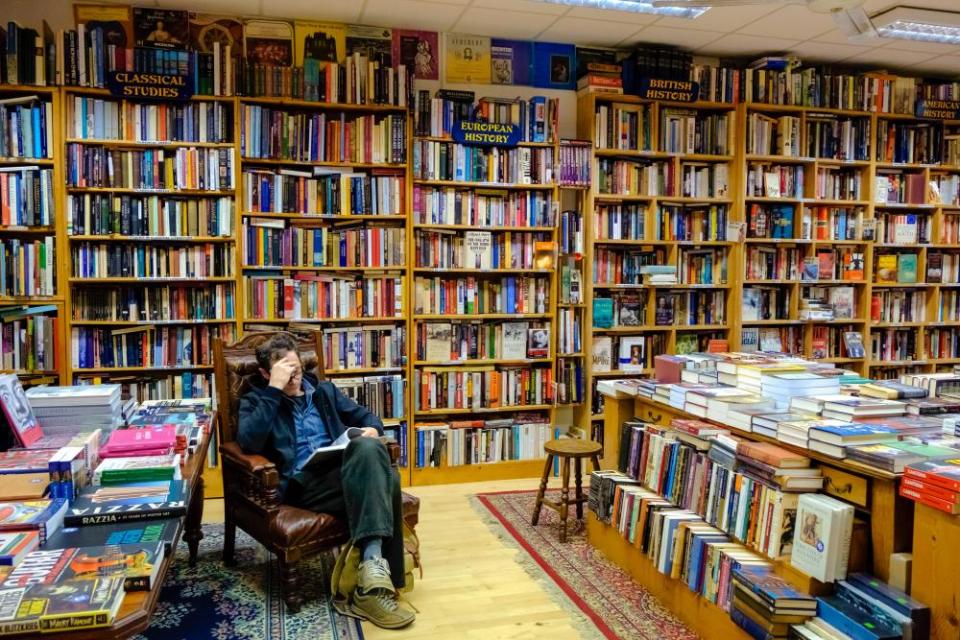
If you like independent bookshops to be a seductive maze of rooms, search out Charlie Bryne’s Bookshop on Middle Street. Inside its labyrinth are more than 100,000 books (new, secondhand, antiquarian) but the staff know their stuff, so can help navigate. It’s no surprise it was voted Irish bookshop of the year in 2019. You’re likely to bump into a visiting author there, just as you are at my place, Kennys. Bell Book and Candle in the Small Crane Square has an eclectic collection of books, comics, music and posters and is a fun place to visit.
Wander the Galway poetry trail
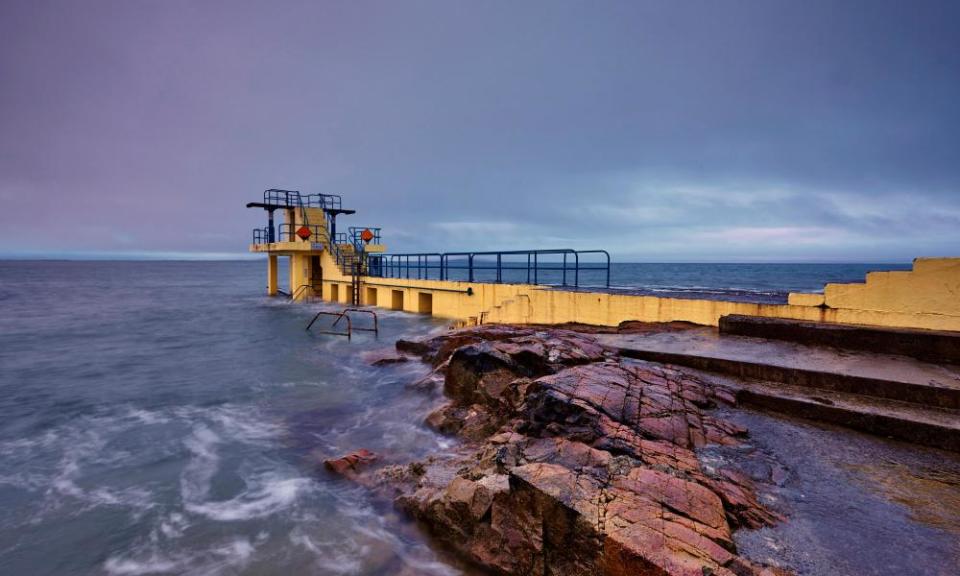
This is a series of more than 20 poems and pieces of writing about Galway engraved on plaques around the city. The bookshop I help run set it up, in conjunction with Galway City Council, and each plaque – in bronze or stone – is in a place that reflects its content. There are words by James Joyce, Seamus Heaney, Moya Cannon, Máire Holmes, Roger McGough and more, and each offers quiet contemplation to lift the soul in an urban environment. They’re happy surprises when you come across them.
• Details at kennys.ie, while a trail map is available from Galway tourist office on Forster Street
Sporting spectacle … with sticks

The 34,000-seat Pearse Stadium in Salthill gives you the chance to see the action-packed – and uniquely Irish – sporting spectacles of hurling and Gaelic football. I think hurling’s one of the fastest stick games in the world, but though the sticks look like weapons they’re rarely used as such: it’s a highly skilled game with wonderful hand-eye co-ordination. If you prefer rugby, the Sportsground on College Road, a five-minute walk from the city centre, is the home of Connacht Rugby. Try for a spot on the Clan Terrace for the best atmosphere.
• galwaygaa.ie
The legend of the Claddagh Ring
The Claddagh was a fishing village at the spot where the Corrib enters the sea, with cobbled streets, mud-walled houses and an independent spirit – with its own laws and king. In the late 1920s, medical officers declared it unhealthy and it was demolished and replaced by concrete houses. The village also had its own style of wedding ring and a tradition of handing them down from mother to daughter. It’s worn with the crown towards the knuckle while single and, after marriage, with the crown towards the nail.
Legend claims that Richard Joyce, a Galwayman, was captured by Algerian corsairs and sold as a slave to a Moorish goldsmith who trained him in jewellery making. In 1689 he was freed and returned to Galway to set up his own business. Some of the earliest known Claddagh rings are believed to be his. There is more about rings and legends at the Claddagh Ring visitor centre on Shop Street in the city centre.
• claddaghlegend.com
Getting there
Irish Rail operates daily services between Dublin and Galway (around 2 hours 30 mins, from €36 return). Galway’s Ceannt station is in the city centre. Ferry ports include Dublin, Dún Laoghaire, Rosslare and Cork, see Irish Ferries for more information. Stena Line runs services from Cairnryan and Liverpool to Belfast.
Where to stay
Built in 1852, The Hardiman (doubles from €115 B&B) is a grand property (originally called the Railway Hotel) that was refurbished in 2019. It is in the city centre, overlooking Eyre Square. The Harbour Hotel (doubles from €108 B&B) serves up a waterfront stay that’s a short walk from the city centre and a 10-minute stroll to Salthill promenade.
Tom Kenny is a director of Kennys Bookshop and Art Gallery
Looking for a holiday with a difference? Browse Guardian Holidays to see a range of fantastic trips


